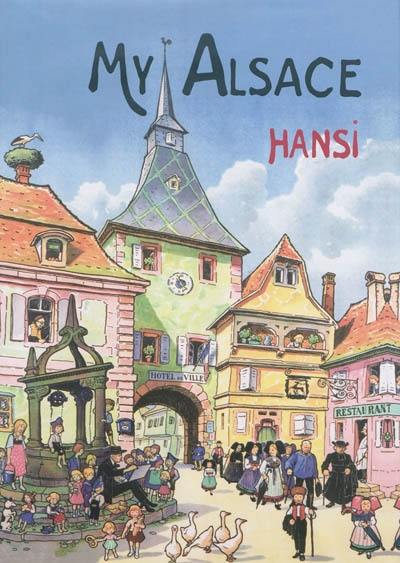
Paru le 15/10/2010 | Cartonné 32 pages
A partir de 9 ans
english version by C.J. Moore
Alsace is a region in the east of modern-day France which changed hands four times between France and Germany in the 19th and 20th centuries. When Jean-Jacques Waltz (« Hansi ») was born in 1873, it was two years since the Prussian army had marched into Alsace, and the province remained under German annexation until the end of the First World War.
Hansi remembered his years at the German school in Colmar as among the worst of his life. Nothing was ever said about the glorious and happy past when Alsace was a free land, joined to the ancient region of Gaul with its Celtic races.
In 1912, Hansi decided to write his own History of Alsace for children. He wanted to show them how much pride they could have in their past, and to hear the story from their own side.
The present book is a hand-picked selection from Hansi's L'Histoire d'Alsace and his L'Alsace Heureuse written in 1919 to celebrate the province's return to freedom. It is full of Hansi's gtrademark colourful and detailed pictures of Alsatian life, as well as his critical but humorous portrayal of the occupying Germans.
Thousands of years ago, Alsace was nothing like it is today...
At the time of Hansi's education in Colmar, Alsace was under occupation by Germany following the Franco-Prussian War. Hansi felt that the teaching of history, in particular, was one-sided, so he resolved to write his own History of Alsace for children, showing them the pride they could have in their region. The present book is a hand-picked selection from Hansi's L'Histoire d'Alsace (1912) and L'Alsace Heureuse (1919).
Hansi (1873-1951) was born Jean-Jacques Waltz in Colmar, in the French region of Alsace which was annexed by Germany following the Franco-Prussian War. He worked as an artist and produced satirical drawings which mocked the German authorities.
He started publishing under the preudonym « Oncle Hansi » or just « Hansi ». He was imprisoned several times, including in Leipzig in 1914, from where he escaped back to France and joined the military during the First World War. In 1941 he was nearly assassinated by the Gestapo, but fled to Switzerland.
He died in Colmar in 1951. He is celebrated in Alsace, where his books and drawings are widely reproduced. His style was to influence many artists such as Hergé, the creator of Tintin.